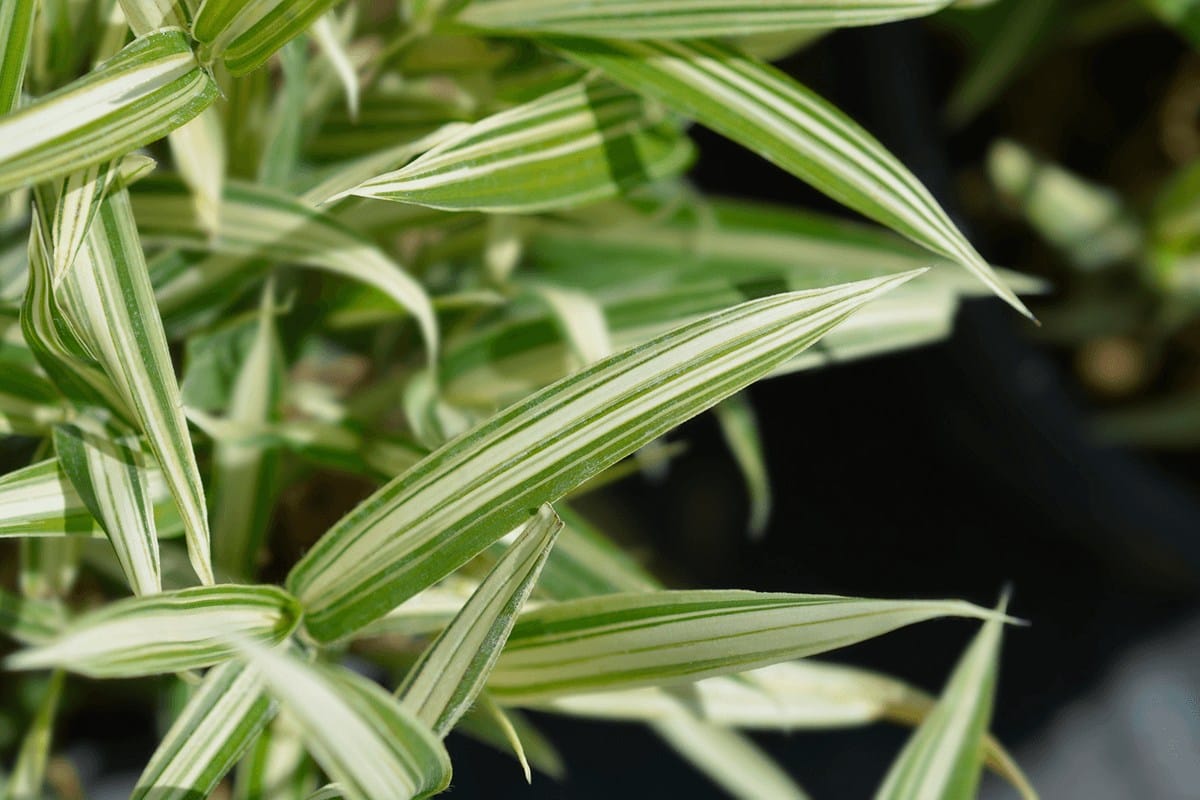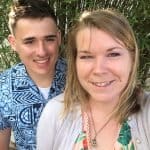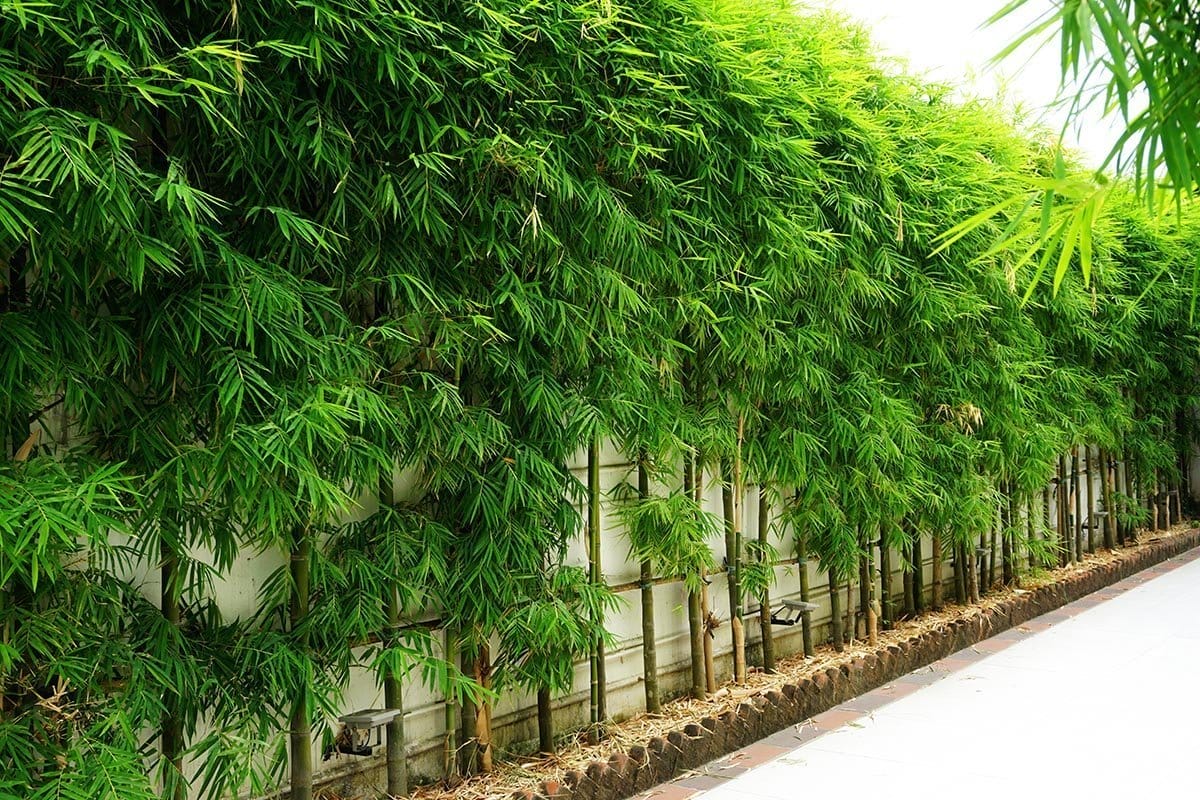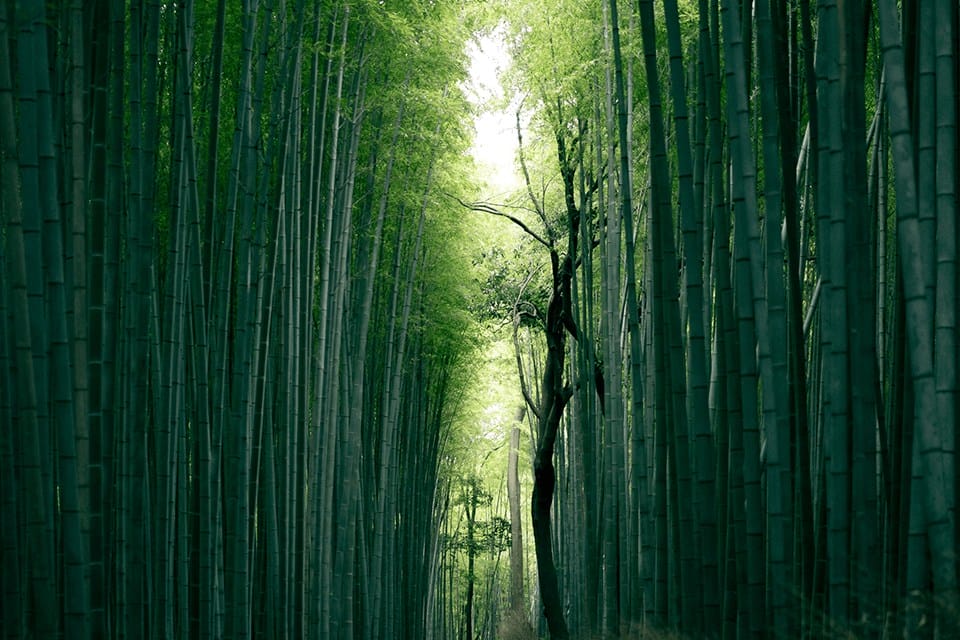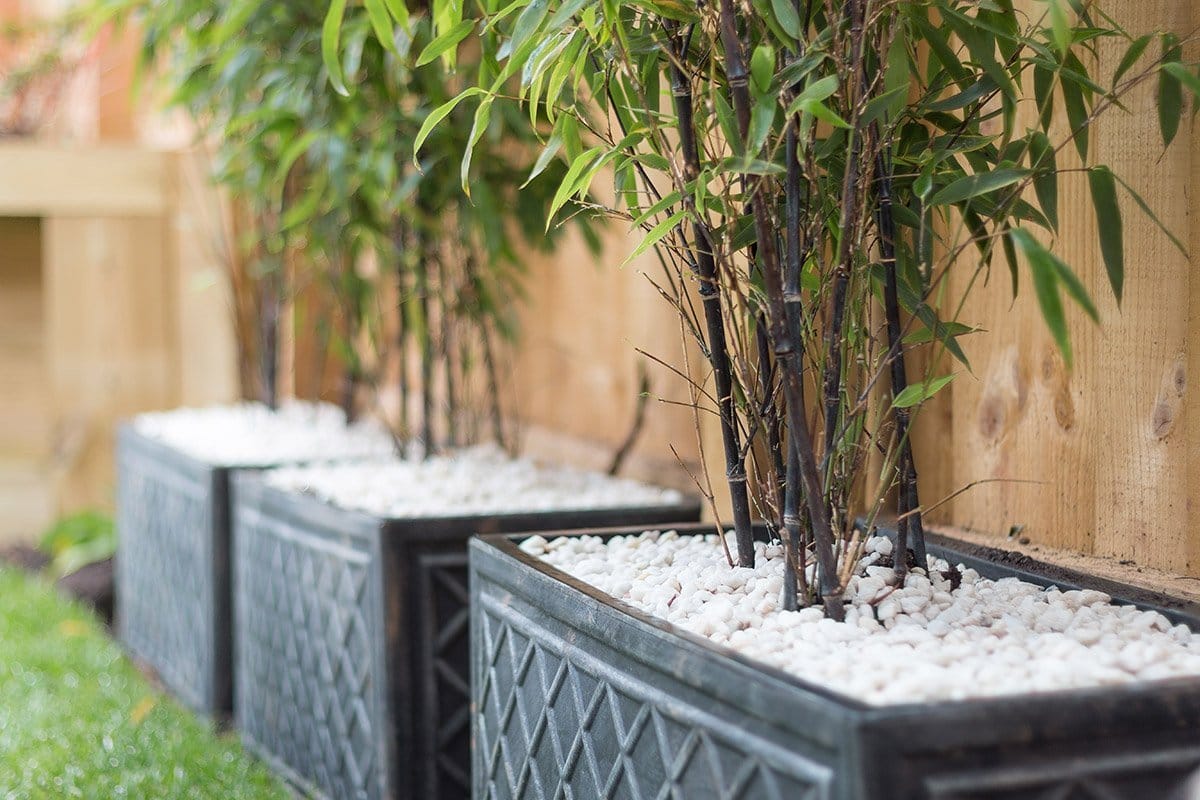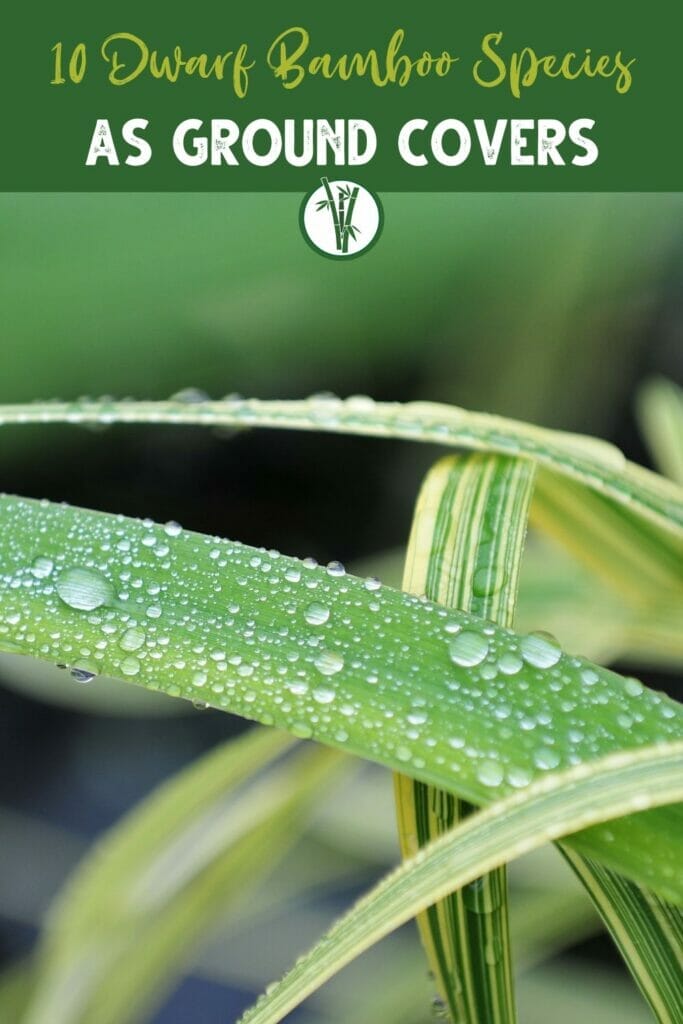
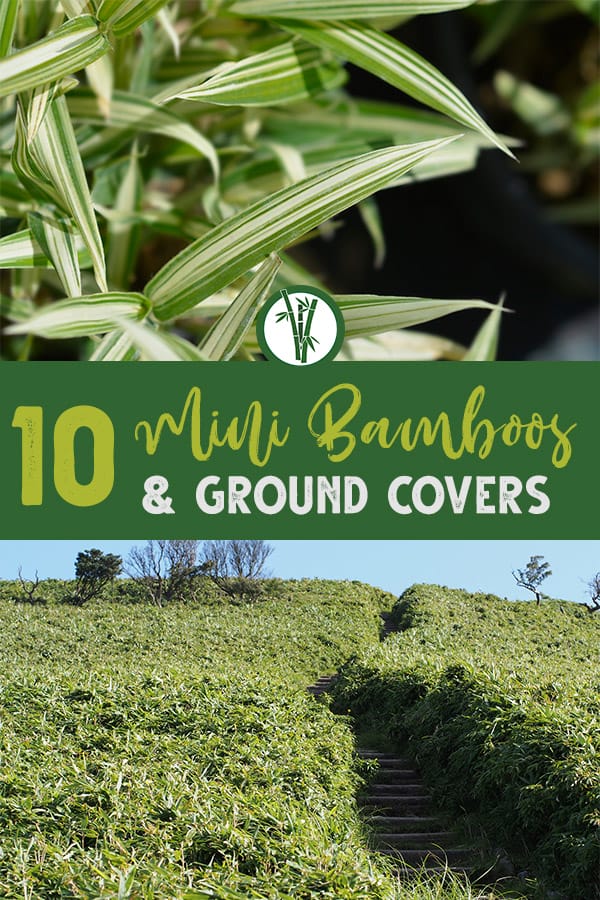
Most times, when we think about bamboo, we tend to visualize groves of gigantic plants. But not all species are tall, or medium height; there are a good number of variations of bamboo that don’t go beyond six feet. They are recognized as ground covers.
Mini bamboo plants come in different colors and sizes. You can find them from dark to bright green, thin to broad leaves, even ones with striped culms. You can get mini species for your patio, short hedges, or make them into a stunning bonsai!
Ground covers are excellent erosion controllers you may have overlooked for years. They are beautiful yet helpful. In fact, mini bamboo plants offer a lot of benefits you may not know of. Let me tell you more about them!
Do you want to jump ahead?
What bamboo species are ground covers?
Ground covers are unique bamboo plant species anyone will want to have around. Unlike some timber variations, which spread aggressively, these do not require much space and can grow under taller bamboo. They can be used as an outstanding under-story for your garden or landscape.
In most scenarios, bamboo lovers cultivate dwarf species to complement other bamboo plants in the garden. When you look at a mature grove, the thick culms are striking, the dense foliage is impressive, but the ground is exposed. So you can accent it with a dwarf variant with lighter leaves.

You can also plant ground covers indoors. Since most tall species are aggressive in their growth, dwarf bamboo plants are more suitable for growing in your home.
They can be grown in containers to form a lush, full plant or low screen. Most of these plants only grow a few inches high. They can serve as short hedges and can even be mowed into lawns. Mini bamboos that are running species are very beneficial as erosion controllers.
The most important thing is getting to know the ones fitting for your soil conditions and temperature. You must check the type of dirt in your area to know the one suitable for your garden. Some bamboo species don’t survive in water-logged areas or acidic environments, while others live under the harshest conditions.
You’ll also need to perform a few activities to keep them looking stunning all year round. Most importantly, mow your ground covers once or twice a year. Especially in spring. This will keep your bamboo healthy and encourage new growth.
10 Dwarf bamboo species for perfect ground covers
Below, you’ll find excellent mini bamboo plants. We hope you fall in love with at least one of them.
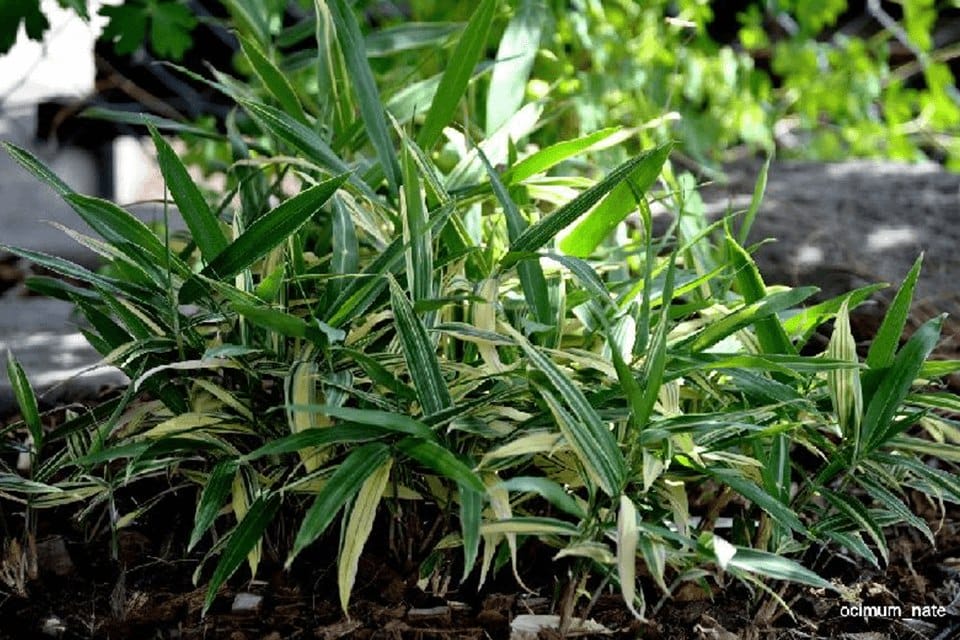
1. Sasaella masamuneana ‘Albostriata’
- Type: Running
- Height: 6 ft (1.8m)
- Stem diameter: 0.3 in (1 cm)
- USDA zones: 7-10
- Hardiness: 0°F (-19°C)
- Light: Full sun, part shade
- Soil: Well-draining soil
- Watering: Moderate
Albostriata is a stunning evergreen bamboo with variegated white and green striped leaves. It is an invasive bamboo species, so you might need to grow it in containers, unless you want a widely spread albostriata species.
Prune this plant in early spring. This helps to rejuvenate the variegation and increase greenery thickening. Albostraita has a high tolerance for varying growing conditions. It thrives in both dense shade and full sunlight.
It withstands a wide range of soils, but avoid dry ones in full sun. It is excellent in bed or container planting. This feature makes it a popular commercial species.
If you are searching for a good ground cover with an excellent ornamental feature, consider this variant of bamboo.

2. Shibataea kumasaca ‘Ruscus-leafed Bamboo’
- Type: Clumping
- Height: 5 ft (1.5 m)
- Stem diameter: 0.25 in (0.6 cm)
- USDA zones: 6-9
- Hardiness: -5°F (-20.56°C)
- Light: Part sun, indirect light
- Soil: Well-draining soil
- Watering: Regular
Shibataea Kumasaca is an excellent ground cover with beautiful dark green foliage. It is ideal for hedge and ornamental purposes due to its unique appearance. This genus is similar to Phyllostachys.
Kumasaca is also known as Ruscus-leafed bamboo, because the shape of the leaves looks like the Ruscus variant. It is highly resistant to bamboo mites. Because of how dense the plant grows, it is one of the best plants for planting in containers.
Shibatea Kumasaca doesn’t thrive under alkaline conditions. If your soil is water-logged, this species may not be the best option for you. It reaches its full height under acidic conditions, and is a running, highly versatile genus.
This bamboo species thrive better in climates similar to the Pacific Northwest or the Northeastern United States. Consider this your option if you want a beautiful and compact dwarf bamboo species suitable for hedges.
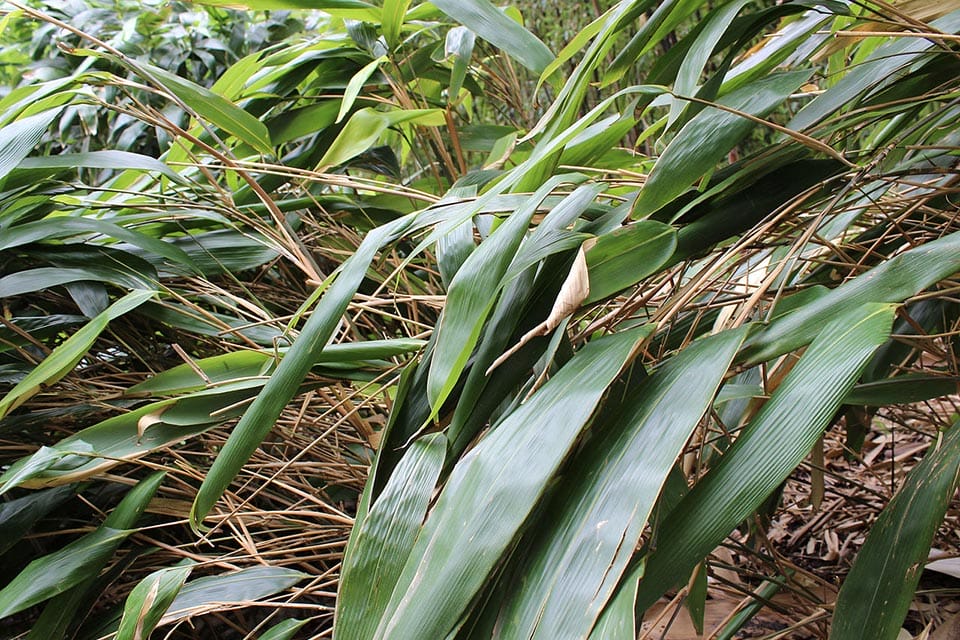
3. Indocalamus tessellatus
- Type: Running
- Height: 7 ft (2 m)
- Stem diameter: 0.5 in (1.3 cm)
- USDA zones: 7-10
- Hardiness: 5°F (-15°C)
- Light: Full sun, part shade
- Soil: Moist, fertile, humus-rich soil
- Watering: Average
Indocalamus tessellatus is an excellent option for controlling erosion. It can be planted along the riverside and still not obstruct the view. It thrives in the shade or sun, but reaches its full features under shade.
If you desire a tropical-looking bamboo plant, this is a perfect choice for you. You’ll totally fall in love with the long, glossy, thick green leaves. Indocalamus tessellatus does great in containers and indoors, so anyone can keep it!
Indocalamus tessellatus is a very hardy plant, but it may shed some leaves in heavy winds. You can even use it as an understory for your garden or a border for wide paths. Since it’s a low-growing bamboo with large leaves, it’ll look great.

4. Pleioblastus akebono
- Type: Running
- Height: 1.5 ft (0.5 m)
- Stem diameter: 0.39 in (1 cm)
- USDA zones: 7-9
- Hardiness: 5°F (-15°C)
- Light: Full sun, part shade
- Soil: Well-draining soil
- Watering: Regular
Akebono is considered to be the shortest of all the dwarf bamboo species. This gorgeous Japanese plant has leaves that appear in the spring. They start almost pure white and slowly turn green as time goes on.
They thrive better under the shade, because the leaves get scorched under a hot climate or sun. This bamboo species requires regular watering for survival.
Pleioblastus are slow-growing and best planted in the ground. Not inside containers. You may want to consider this an option if you are looking for a ground cover with attractive leaves for ornament.
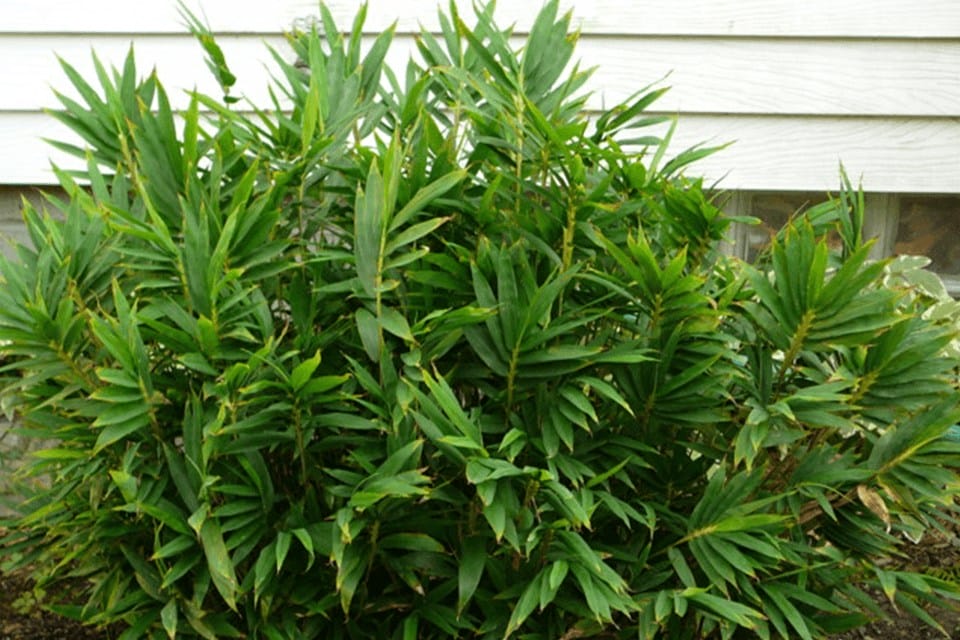
5. Pleioblastus pygmaeus ‘Pygmy Bamboo’
- Type: Running
- Height: 1.5 ft (0.5 m)
- Stem diameter: 0.13 in (0.32 cm)
- USDA zones: 6-10
- Hardiness: 5°F (-15°C)
- Light: Full shade, part shade
- Soil: Well-draining soil
- Watering: Moderate
Pleioblastus pygmaeus is an evergreen plant that can tolerate harsh conditions like drought, although it may die in severe winter conditions. It is a very small dwarf species with slender, erect, canes which have unique purple nodes.
This bamboo forms a dense mat of fine green leaves. It is an extremely fast-spreading bamboo, which makes it an excellent ground cover and erosion controller.
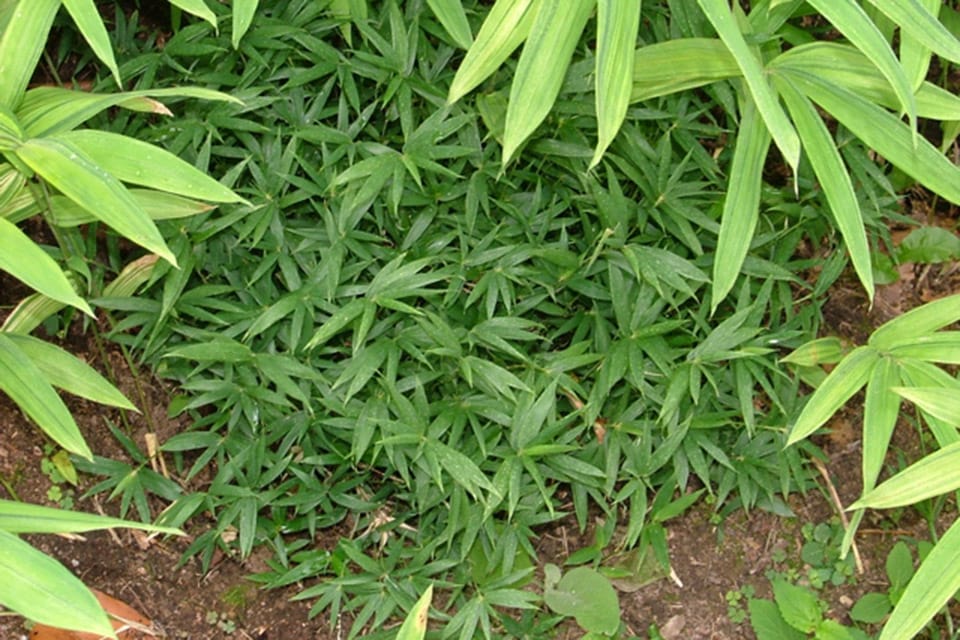
6. Pleioblastus distichus ‘Dwarf Fernleaf Bamboo’
- Type: Running
- Height: 2 ft (0.6 m)
- Stem diameter: 2 in (5 cm)
- USDA zones: 6-10
- Hardiness: -5°F (-20°C)
- Light: Full sun, part shade
- Soil: Well-draining soil
- Watering: Average
Pleioblastus distichus is an amazing dwarf bamboo with distinct and beautiful leaves like ferns. It is an excellent ground cover and one of the best options for bonsai lovers.
It has rigid but erect leaves, which makes it stand out among other dwarf bamboo plants. This species does best in partial shade, and grows better in cooler climates with regular watering.
It is also excellent for erosion control and ornamental purposes. You may consider this variation if you are searching for compact ground cover dwarf bamboo.
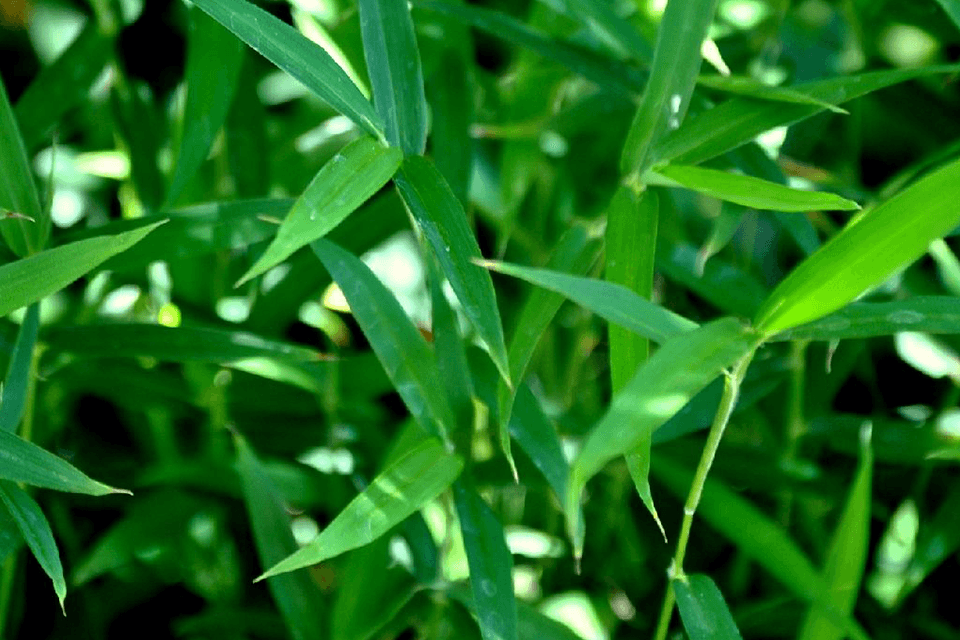
7. Pseudosasa owatarii
- Type: Running
- Height: 5 ft (1.5 m)
- Stem diameter: 0.3 in (1 cm
- USDA zones: 7-10
- Hardiness: 0°F (-18°C)
- Light: Part shade
- Soil: Sandy Loam, Clay Loam
- Watering: Regular
Pseudosasa owatarii is a running bamboo plant with a very delicate appearance that is native to China, Japan, and Korea.
This species is excellent for hedges and is mostly used for making arrows because of its slender look. It is also a great option for erosion control.
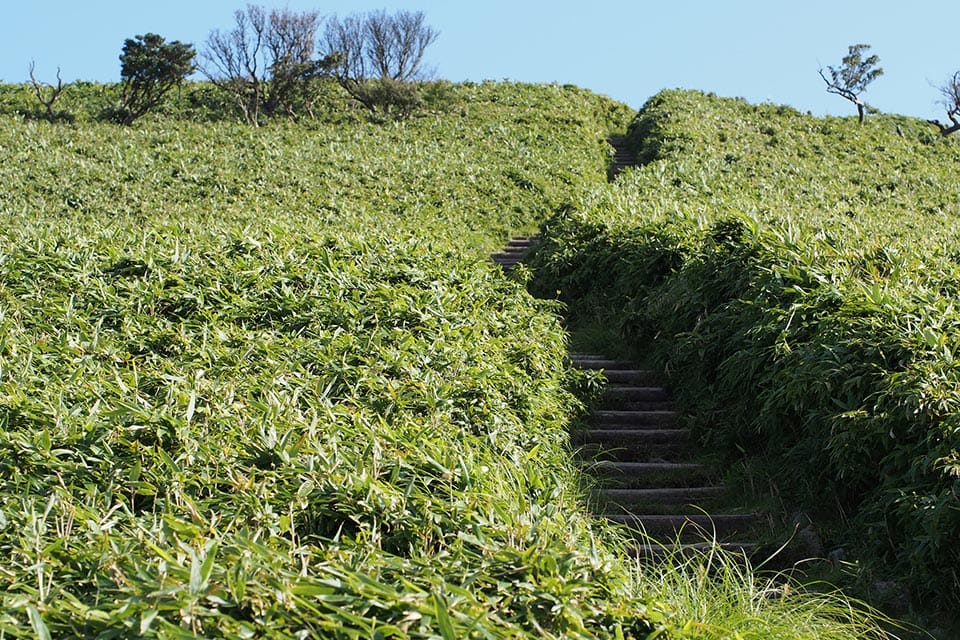
8. Sasa hayatae ‘Broad-leaved Bamboo’
- Type: Running
- Height: 3 feet (1 m)
- Stem diameter:
- USDA zones: 5-10
- Hardiness: -10°F (-23°C)
- Light: Part shade
- Soil: Well-draining soil
- Watering: Average
Sasa Hayatea is mostly found in China and sometimes in Japan. Sasa is a Japanese name for some specific dwarf bamboos and Hayatea comes from Bunzo Hayatea, a Japanese man who was a botanist.
Sasa hayatae is similar to Sasa veitchii. It is a running bamboo species, so it would be best to plant it in a container or use a root barrier. Sasa hayatae is a hardy dwarf species with dark green leaves.
Its leaves usually develop white/cream margins in winter. This species can be used as an effective ground cover plant or an impressive low hedge.
Sasa hyatae thrives in moist, fertile, well-drained soils. It tolerates most pH of the soil and requires very little maintenance.

9. Sasaella ramosa
- Type: Running
- Height: 6 ft (2 m)
- Stem diameter: 0.35 in (0.9 cm)
- USDA zones: 7-10
- Hardiness: 0°F (-18°C)
- Light: Full sun, part shade
- Soil: Moist, well-draining soil
- Watering: Regular
This bamboo species grows aggressively and can thrive anywhere under any soil condition. Sasaella ramosa is an evergreen dwarf bamboo plant, and makes an excellent ornament. It is a good option for erosion control and can be planted indoors in containers.
In colder climates, some of its leaves die back in the winter, but they come back strong every spring. Ensure you trim this bamboo back to ground level before shooting season. This will keep your plant healthy.
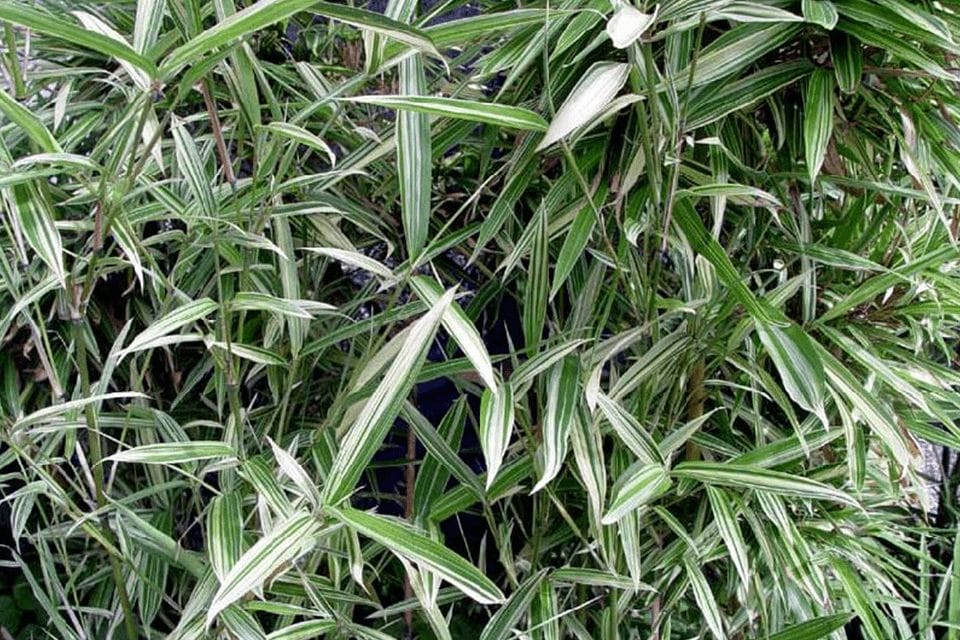
10. Pleioblastus fortunei ‘Dwarf White Stripe Bamboo’
- Type: Running
- Height: 4 ft (1.2 m)
- Stem diameter: 1.18 in (3 cm)
- USDA zones: 6-10
- Hardiness: 10°F (-12°C)
- Light: Part shade
- Soil: Moist, well-draining soil
- Watering: High
Dwarf white stripe bamboo lights up any garden with its green and white striped, young foliage. It makes the best hedges in containers. This genus is a dense, tough, vigorous ground cover.
It thrives both in full sun and part shade. For best results, plant in well-drained soil. This dwarf species prefers acidic soil, forming a low groundcover when given the shady moist conditions that are similar to its natural habitat in Japan.
As I said before, there are a good number of mini bamboo plants out there. I hope you’ve found just the perfect species for your home or garden.

